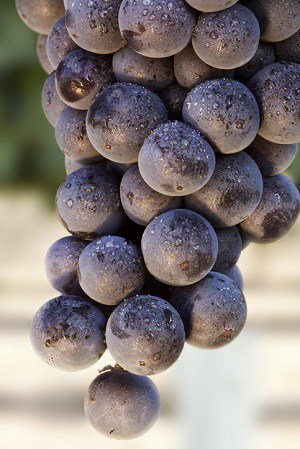Corvina Wine Profile
Corvina finds itself in a bit of a predicament; although it plays a key role in a very famous wine, it’s not often seen on its own. In fact, when it is bottled on its own, it’s relegated to lowly IGT status, which is quite simply unjust!
Corvina Tasting Notes
Corvina is most often blended with Rondinella and Molinara for Valpolicella and Amarone. It’s a fairly thick-skinned grape, which certainly adds to the heft for which Amarone is known. However, since it hails from northeastern Italy, most reds are lighter bodied than Amarone, including Corvina-based Valpolicellas and Bardolinas.
On its own, Corvina produces a lighter-bodied wine with floral red fruits on the nose and savory currant, red cherry, and plum fruits on the palate. Bright and fruity, it has historically been compared to Beaujolais and the two definitely have quaff-ability in common.
Valpolicellas offer deeper fruit and herbal notes while Amarones are rich and lush due to the ripasso method. Corvina is also the star of Recioto della Valpolicella, an inky dessert wine that is an absolute must-try.
Food Pairing Corvina, Amarone and Valpolicella Wines
Corvina on its own pairs well with lighter fair; think spicy seafood stews or grilled salmon. Due to the mid-weight of Valpolicellas, they work well with poultry and game, roasted vegetables and earthy stews. Amarones demand heartier fare, like lamb, Bolognese sauce or even spiced barbecue.
Wine Growing Regions for Corvina
Corvina is almost exclusively found in the Veneto region of Italy. When blended, it is found in Bardolina DOC, and the many Valipolicella DOC(G)s, including Amarone della Valpolicella, Recioto della Valpolicella, and Valpolicella Ripasso.
Beyond Italy, Corvina can be found in limited plantings in Argentina but it is not a key varietal there just yet.
Check out some of these Corvinas and Corvina-blends from Italy:
- Scaia, Corvina IGT, Veneto, Italy
- Allegrini, ‘La Grola’ Corvina IGT, Veneto, Italy
- Dal Forno Romano, ‘Monte Lodelotta’ Amarone della Valpolicella, Veneto, Italy
- Speri Sant’Urbano, Amarone della Valpolicella, Veneto, Italy
- Rocca Sveva, Valpolicella Ripasso, Veneto, Italy
- La Salette, Valpolicella Classico, Veneto, Italy
Learn About These Other Wine Grape Varieties
Written By Jamie Metzgar
Jamie Elizabeth Metzgar began her career in wine by pouring in a tasting room on the East End of Long Island, NY. After moving to New York City, she landed a position at Chambers Street Wines where she was encouraged to pursue wine education at the Wine & Spirits Education Trust (WSET). She earned Level III certification there and has since earned California Wine Appellation Specialist and Certified Specialist of Wine certifications as well. After way too many moves, she has recently landed in Northern California where she is compiling an unofficial roster of dog-friendly tasting rooms.
On its own, Corvina produces a lighter-bodied wine with floral red fruits on the nose and savory currant, red cherry, and plum fruits on the palate. Bright and fruity, it has historically been compared to Beaujolais and the two definitely have quaff-ability in common.
Valpolicellas offer deeper fruit and herbal notes while Amarones are rich and lush due to the ripasso method. Corvina is also the star of Recioto della Valpolicella, an inky dessert wine that is an absolute must-try.
The Structure and Style of Corvina Wines
Body Medium - Plus
Sugar Sweet or Dry
Acid High
Alcohol Medium Plus
Tannins Medium Minus

